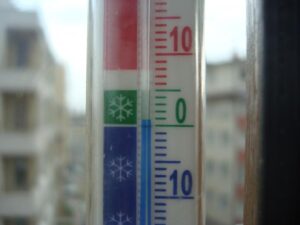 As frigid temperatures continue to grip the U.S., it’s important that workers exposed to these conditions are aware of the dangers of freezing temperatures. Workers who are exposed to extreme cold or cold environments are more susceptible to cold stress.
As frigid temperatures continue to grip the U.S., it’s important that workers exposed to these conditions are aware of the dangers of freezing temperatures. Workers who are exposed to extreme cold or cold environments are more susceptible to cold stress.
Cold Stress Injuries and Illnesses
Cold stress is an umbrella term describing the type of occupational illnesses and injuries that can occur during exposure to extreme cold. Cold stress may manifest in a variety of afflictions including hypothermia, frostbite, trench foot, and chilblains.
Chilblains — The painful inflammation of small blood vessels in the skin that occur in response to repeated exposure to cold but nonfreezing temperatures. Symptoms: redness, itching, blistering, inflammation, ulceration.
Trench Foot — An injury to the feet that occurs after prolonged exposure to wet and cold-related conditions. Occurs when the body constricts blood vessels in the feet to prevent heat loss and the skin tissue beings to die. Symptoms: reddening of the skin, numbness, leg cramps, swelling, tingling pain, blisters or ulcers, bleeding under the skin, gangrene.
Frostbite — An injury cased by freezing of the skin and deeper tissues, resulting in the loss of feeling and color in the affected areas. It can permanently damage body tissues and can lead to amputation. Symptoms: numbness, tingling or stinging, aching, bluish or pale coloring, waxy skin.
Hypothermia — The term which describes the process of internal body temperature falling due to prolonged exposure to the cold. Symptoms: early symptoms include shivering, fatigue, loss of coordination, disorientation; late symptoms include ceasing of shivering, dilated pupils, slowed pulse and breathing, loss of consciousness.
Prevention
The prevention of cold stress-related injuries to workers is the responsibility of both employers and employees. Follow these tips to help prevent cold stress!
Workers
- Wear appropriate clothing
- Wear several layers of loose clothing to provide better insulation
- Avoid tight clothing, it reduces blood circulation
- Keep your range of motion available, clothing may restrict movement
- Protect your ears, face, hands, and feet
- Use waterproof footwear
- Bring a fresh pair of clothing, gloves, hats, jackets, etc.
- Keep bare skin away from metal surfaces
- Stay well nourished by snacking on energy-rich foods
- Report signs and symptoms of cold-related illnesses immediately
- Utilize warm locations during work breaks
- Wear a hat, it reduces the amount of body heat that escapes from your head
Employers
- Trains supervisors and workers to prevent, recognize, and treat cold-related illness and injury
- Reduce workers’ time spent in cold environments
- Ensure access to warm areas
- Encourages breaks and monitor workers
- Initiate a buddy system
- Include a medical and environmental thermometer and chemical hot packs in first aid kits
- Provide wind protective clothing and other appropriate cold weather gear
Visit our Partners webpage for more information on cold stress and for other resources on preventing workplace incidents and illnesses.
Stay warm everyone!
